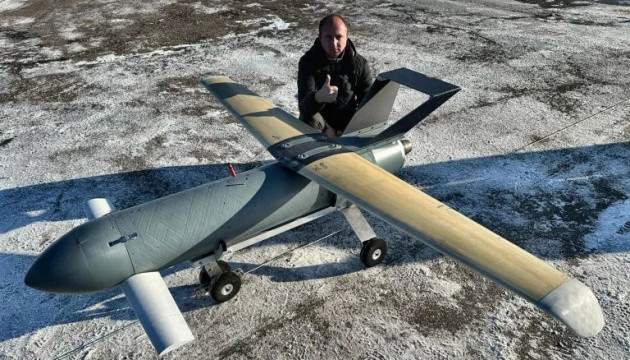
New Weaponry Products Designed and Manufactured Domestically in Ukraine that Became Available in 2024
Over eight hundred Ukrainian companies of different types and forms of ownership have been engaged in manufacturing weapons and military equipment systems for the needs of Ukraine’s the Defense and Security Forces. In 2024 alone, the Ministry of Defense codified and approved for operational use over 1,000 weapons and military equipment products, including more than 600 products designed and made domestically in Ukraine. That being said, experts are almost unanimous in that 2024 was a year of success for Ukrainian arms industries. Let's hope that these accomplishments will serve our defenders so that 2025 becomes victorious for Ukraine.
SHOOT FARTHER AND STAY ACCURATE, PRODUCE CHEAPER AND FASTER
Vehicles, unmanned aerial systems, ammunition, electronic jamming systems, communications, engineering equipment, and ground robotic platforms comprise major share of the new products codified and approved for operational use in 2024, according to statistics from the Ministry of Defense.
These are definitely far from all the “groundbreaking” defense technologies that became available to Ukraine last year, but include also updated technologies that have long been fielded with the military, in addition to products redesigned with new components, as well those developed using technology licensed from emerging international manufacturers or those seeking to expand their market reach.
The year 2024 saw a threefold increase in the quantity of new weapon products codified and approved for operational use compared to the previous year, and this cannot but rejoice, especially given that the Ukrainian military added as many as several long-range weapons to its arsenal, which makes Ukraine less dependent on international partners when it comes to long-range strikes against military and defense industrial targets deep inside Russia.
WHAT YOU MAY NOT KNOW ABOUT UKRAINE’S NATIONAL MISSILE PROGRAM
2024 saw long-awaited news about progress achieved in the development, production testing/evaluation and precision use of a number of Ukraine’s indigenous deep-strike missiles and drones against targets inside the Russian Federation. Some of the previously developed technologies entered the production stage, while several others are now ready to proceed to full-rate production after having completed official qualification trials.
Ukrainian industries put out over a hundred missiles of various types and ranges during 2024, according to statements from Ukrainian leaders and government officials.
1. Palyanytsya instead of "bread and salt " for the occupiers
In August, it emerged that Ukraine had hit a military target in currently Russian occupied Crimea with its new turbojet drone missile named Palyanytsya. (The word “palyanytsya” is used as a shibboleth test in the Ukrainian language, to identify Russian soldiers or saboteurs, some of whom, when captured, claimed to be Ukrainians but were unable to pronounce the word properly).
Palyanytsya represents a new class of hybrid weaponry that combines aerodynamic capabilities and autonomous control of an UAV with lethality and speed of a missile, according to analysts.
Palyanytsya was approved for full-rate production after being used with success against Russian military targets. Due to the classified nature of the project, specific technical details about the “Palyanytsya”, as well as the identity of the manufacturer and production rates remain undisclosed.
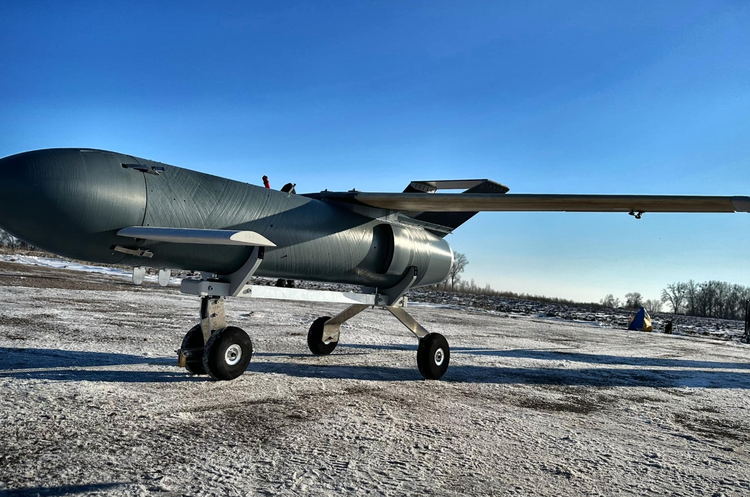
However, sources suggest that the missile’s range is sufficient to place more than two dozen enemy airfields within its strike radius. The missile features a central body with forward-positioned wings and a tail section equipped with four control surfaces, a configuration typical of cruise missiles. Launched from the ground, the “Palyanytsya” is powered by a turbojet engine, enabling it achieve long-range capabilities. Armed with a 100-kg warhead, Palyanytsya can deliver it to 250-435 miles at 250-310 miles per hour.
Ukrainian officials claim the Palyanytsya costs less than USD 1 million, but some defense analysts estimate the cost to be in the range between USD 50,000 and 100,000, i.e. much less than Western cruise missiles that cost upwards of one million USD.
2. "Hell" for the Rashists instead of the paradise promised by Putin
Ukraine has showed off a new locally-produced “rocket-drone” which it claimed could fly 700 km (435 miles), more than twice the longest range attributed to missiles supplied by Western allies. The unmanned craft, called “Peklo” – which means hell in Ukrainian – is the second such “rocket-drone” unveiled by Kyiv in 2024.
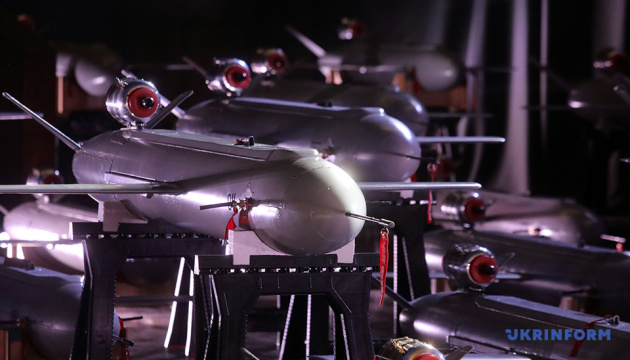
Reports indicate that the Peklo can achieve a range of up to 700 km (435 miles) and speeds of up to 700 km/h (435 mph). Interestingly, following the tradition set by the Palianytsia, this weapon has been classified as a rocket-drone, despite appearing in photos as a conventional cruise missile with relatively compact dimensions. While the exact specifications of the Peklo missile remain classified, official photos provide some insight into its characteristics. Regarding dimensions, the approximate length and wingspan of the Peklo are estimated to be around 2 meters. The warhead’s weight is unlikely to exceed 50 kg due to the missile’s compact size. This estimate can be compared to conceptually similar systems like Anduril's Barracuda. While increasing the warhead weight is technically feasible, it would proportionally reduce the missile’s range.
Its rear tail assembly is V-shaped to save weight. Additionally, the control surfaces—ailerons and elevons—lack external linkages, which is a hallmark of a mature, jet-engine-based design.
At the missile’s nose, a pitot tube is visible, essential for measuring airspeed. This detail also sheds light on the Peklo missile's navigation systems, which likely include inertial and satellite navigation, and possibly TERCOM or DESMAC systems for comparing terrain or imagery against reference data.
The launch method remains an issue. The long fixed wings suggest it is unlikely launched from an aircraft. For ground launches of jet-powered aircraft like this, a rocket booster is typically required, usually attached beneath the missile, meaning its launch options are limited to ground platforms only.
3. Funeral carnations on the graves of enemies - the Ukrainian "Ruta"
Besides the Palyanytsya rocket drone presented in August and the Peklo cruise missile revealed in December, Ukrainian authorities have shortly announced ongoing tests of the third domestic long-range weapon, the Ruta (Ukrainian for 'Red Rue') missile.
The product was briefly disclosed by President of Ukraine Volodymyr Zelensky without any additional details. So we can at least get some idea of this innovative design based on the insider information from Defense Express.
Colleagues describe the Ruta missile as a design by Destinus, a Europe-based start-up. Destinus was founded by Mikhail Kokorich who fled Putin's Russia and founded a company in Europe. The media that interviewed Kokorich claimed that his firm was supplying Lord drones to Ukraine previously. These propeller-driven UAVs have a range estimated between 750 and 2,000 km (373-1,245 miles).
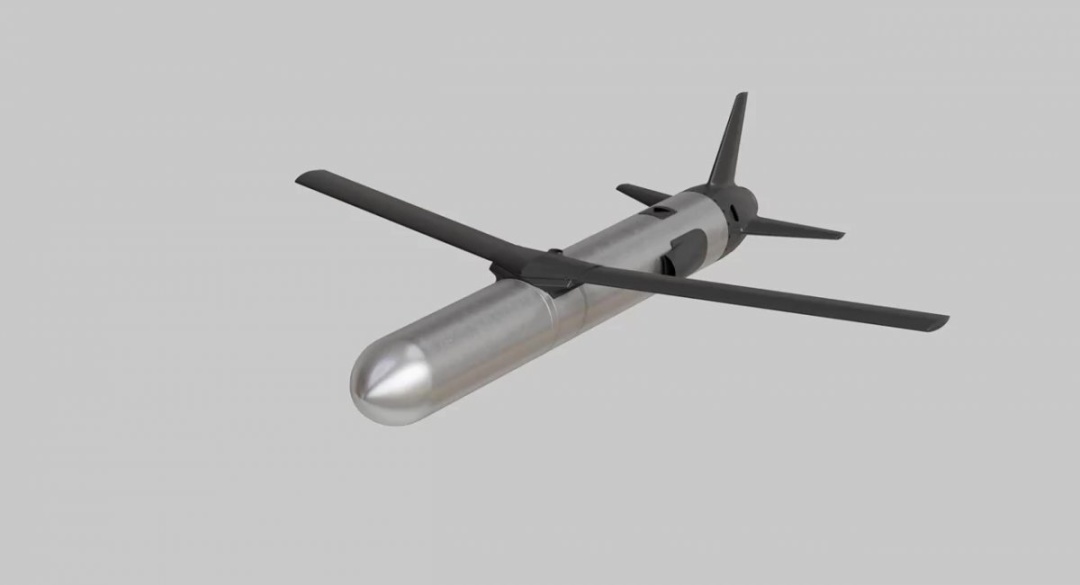
The Ruta is a propeller-driven UAV that has a range estimated between 750 and 2,000 km (466-1,243 miles). Ruta takes off with the help of a rocket booster and offers a very cost-effective approach compared to other UAVs of its class — in terms of the size, payload capacity, and speed.
While not disclosing the values of these parameters, Destinus referes to Ruta precisely as a drone with interchangeable payloads to adapt for specific missions; for example, the reconnaissance version came with a parachute to ensure safe landing and reuse.
At the Eurosatory 2024 exhibition, Destinus demonstrated a sample with a slightly different design suggesting the weight of the warhead inside this aerial vehicle could measure in tens of kilograms, perhaps, closer to a hundred kilos given its announced operational range of 300 km.
The main advantage Ruta brings to the table is high-speed flight capability at around 500 to 800 km/h (310-500 mph), which gives this rocket-drone better chances at breaking through the Russian mobile air defense groups armed with machine guns and leaving completely no chances for helicopters trying to intercept it.
4. “Trembita” – Ukrainian folk music instrument of resistance
The Trembita is an affordable cruise missile designed and developed by Ukrainian engineers that comes at a cost significantly lower than its Western counterparts. Named after a traditional long alpine horn used by Ukrainian shepherds in the Carpathian highlands of the west, the development of this missile was the work of a dedicated team of eight Ukrainian engineers.
The cost of manufacturing the missile armed with a 20-30 kg warhead is just USD 15,000, which drops to just 3,000 when used as a dumb drone designed to distract and deplete the Russian air defenses, thus paving the way for armed drones to follow and hit their targets. This pricing is just a small fraction of the cost of Russia's hypersonic and cruise missiles, such as the Kinzhal or Kalibr, which are estimated to cost between $1 million to $2 million each.
The Trembita missile is designed to be capable of carrying a warhead weighing 20-30 kilograms. This warhead can be equipped with one of two different types of explosive charges. One option is a thermobaric charge, which creates a blast wave of extremely high pressure by rapidly releasing a large amount of energy in the form of heat and light. Alternatively, it can carry a high-explosive charge, which detonates more quickly and with more concentrated energy output. In some cases, a combined high-explosive charge is used, which blends features of both types for a multipurpose effect.
According to the Ukrainian engineers who developed Trembita, this missile represents a new class of weaponry that can be launched from either a combat vehicle or a ship, using a pneumatic catapult or a solid-fuel booster.
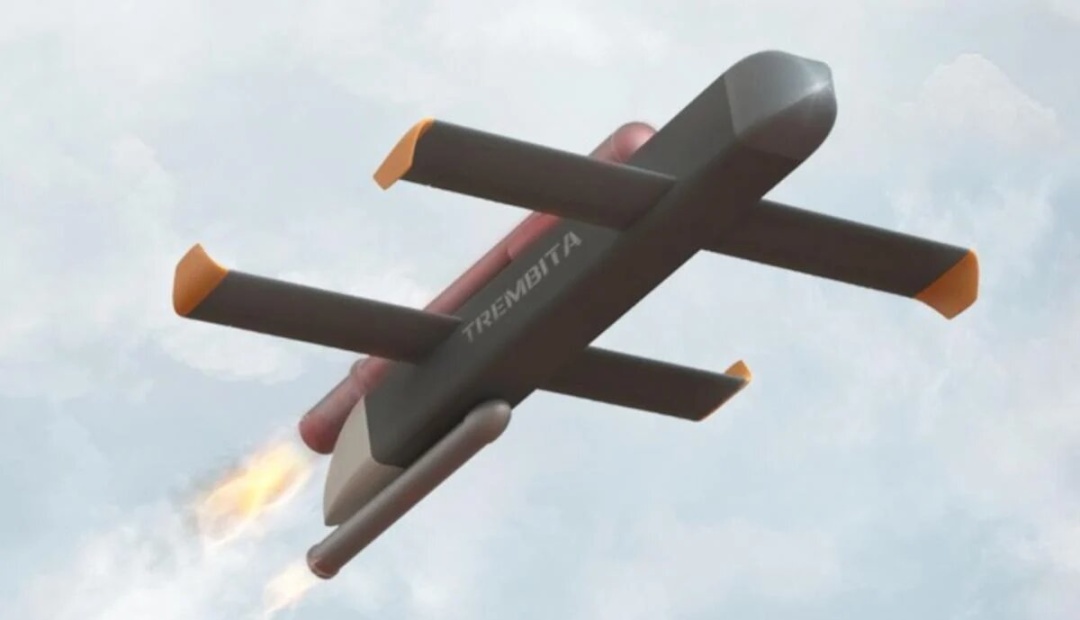
The Trembita missile is designed with the capability to target a variety of land targets, including combat vehicles and air defense systems. This adaptability enhances its value on the battlefield and contributes to its overall effectiveness in combat scenarios.
The Trembita missile operates using a jet pulse engine, an innovative propulsion system that functions by intermittent combustion. This engine type is fueled by a reservoir that holds 30 liters of either diesel or petrol, making it versatile as these types of fuel are commonly available from local sources. Trembita travels at 400 km/h (250 mph) to ranges as far as 200 km (125 miles). A larger and more powerful model is being developed to reach Moscow. It also boasts a significant cruising range, being capable of covering up to 140 kilometers (125 miles) before needing to refuel.
A distinct advantage of this type of propulsion system is its mechanical simplicity. Because it lacks moving parts, manufacturing and maintenance become straightforward, making the missile more cost-effective to produce and upkeep.
For the launching, the Trembita missile features a solid rocket motor, which is mounted to the lower rear section at the rear of the fuselage.
According to details shared by the manufacturer of the Trembita missile, the main objective of Ukraine's first indigenously-developed cruise missile is to effectively counter Russia's defense mechanisms. The strategic plan involves launching these missiles as part of a coordinated battery, wherein 20 to 30 missiles would be dispatched simultaneously.
Interestingly, not all of these missiles are intended to carry explosive warheads. Some are designed for specific strategic objectives such as targeting ammunition depots and command and control centers. These targets have been selected due to their crucial role in maintaining effective enemy operations. By disrupting these sites, the Ukrainian forces aim to impede Russia's capacity to respond or retaliate effectively.
Furthermore, an additional effect of the Trembita missiles, as stated by the producer, is the significant psychological impact they have on the Russian soldiers. These missiles generate a thunderous noise of around 100 decibels, which is expected to lead to a "negative psycho-emotional" effect. This could cause disorientation, fear, and demoralization among the Russian forces, potentially leading to reduced combat effectiveness. In this way, the Trembita missiles serve as not just physical, but also psychological weapon of warfare.
5. Ukraine’s new Sapsan missile hiding in the wings to make its first strike on the enemy
President Volodymyr Zelensky announced at a press conference in late August that Ukraine has successfully tested its first ballistic missile manufactured in-country. Defense Express analysts suggest the missile Zelensky mentioned is likely the Sapsan/Hrim-2, an operational-tactical missile system that Ukraine has been developing since 2009. This announcement signifies not just the appearance of a new type of weapon in Ukraine's arsenal, similar to American-provided ATACMS systems. Apart from the efforts put into the conceptual predecessor, the Sapsan program, long before the outbreak of the larger invasion by Russia, reaching the testing stage means that the industry produced not just one prototype but a quantity sufficient for trials.
The Sapsan (Ukrainian for ‘Peregrine falcon’) can potentially travel to ranges up 500 kilometers, carrying a 460-490 kg warhead, making it more lethal than ATACMS and comparable to the Russian Iskander missile. This range, while not reaching Moscow, could potentially strike targets in Crimea, including the Crimean Bridge, and other strategically important areas currently under Russian control.
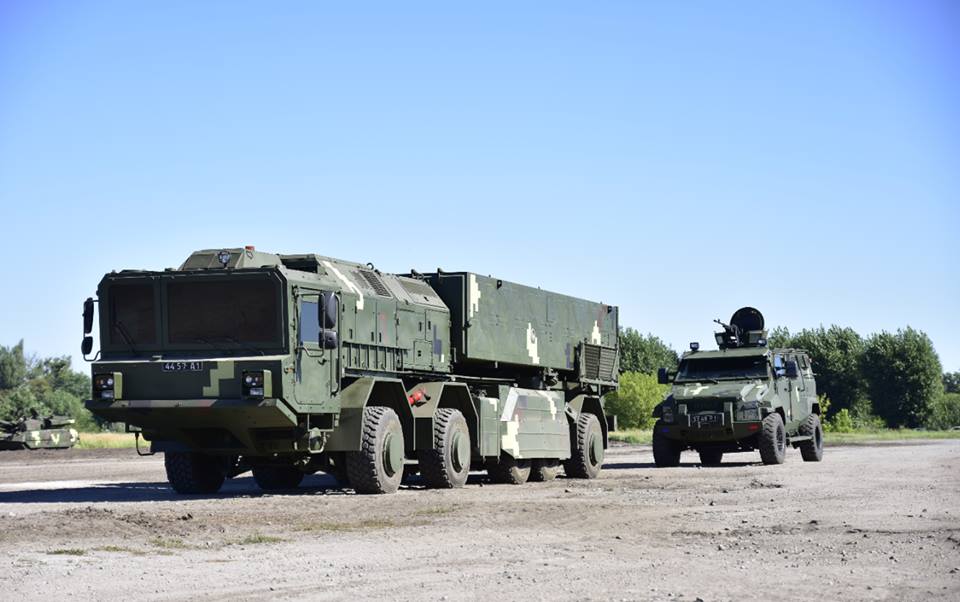
At the 2018 Independence Day parade in Kyiv, the Sapsan/Hrim-2 was showcased mounted on a 10-wheeled transport-launcher-erector vehicle carrying two missiles.
The onboard control system is inertial, equipped with radar and optoelectronic navigation and guidance systems. The missile in a 7.2-meter launch container weighs 3.5 tons, and the missile burst covers an area of approx. 10,000 square meters in diameter.
The Ukrainian military and experts are also eagerly awaiting the start of series production of the long-range Neptune cruise missile. There is encouraging information suggesting the good news will not be long in coming.
6. Precision glide bombs
Ukrainian defense industries have reached a visible progress developing and producing precision glide bombs, some of which saw their first combat deployments last year. It emerged in September that the first precision bomb designed and manufactured domestically in Ukraine was officially fielded with the Ukrainian Armed Forces. While its technical specs remain undisclosed, analysts suggest that the bomb can reach and hit targets at sufficiently long ranges for this class of weaponry. As seen from the images and videos circulating online, it is powered by a high-power solid-propellant motor or, alternatively, a turbojet engine. Despite this, according to expert assessments, the bomb comes out three to five times cheaper than a HIMARS missile.
UAVs AND GROUND ROBOTIC SYSTEMS
1. The “Killer Duo”
During German Chancellor Olaf Scholz's most recent visit to Ukraine, not only the Ukrainian equivalent of the Shahed one-way attack drone was presented. The official photos from the event show a new kamikaze drone with cruciform wings. The photos published by the Office of the President of Ukraine suggest that this kamikaze drone is a loitering munition designed to hit targets in the frontline area, suggesting it is similar in range and function to the American Switchblade or the Russian Lancet UAVs.
This system, consisting of a Shark reconnaissance drone by Ukrspecsystems and a RAM-2X loitering munition, is called or sloganed the Killer Duo.
Apparently, the RAM-2X is a modernized version of one of the first Ukrainian loitering munitions, the well-known RAM II drone, which was developed based on the Leleka-100 by DeViRo.

Photo courtesy of Defense Express
According to Defense Express, the use of the cruciform wing makes the drone more maneuverable compared to the conventional scheme. As for the name, the manufacturer had to switch from Roman to Arabic numerals and avoid the name RAM IIX, which could have been confusing.
Given that this is a system, the Shark reconnaissance UAV's role will obviously not be limited to searching for and tracking down targets and guiding the RAM-2X. In this role, the Shark UAV can work with any other loitering munition, even with Switchblade 600, as it was during the hunt for the Russian Tor anti-aircraft missile system.
It is known that the drone by Ukrspecsystems has repeatedly demonstrated the ability to function effectively in the presence of substantial jamming, just as it did while performing missions over Russian occupied Donetsk, according to Defense Express. This therefore makes it suitable to be used as signal relay amplifier for the RAM-2X strike drone, thus boosting both its range and effectiveness.
2. Ukrainian mini-Shahed
Recently, during German Chancellor Olaf Scholz’s visit to Kyiv, a new Ukrainian drone made headlines after being featured in official photographs. Its appearance immediately drew comparisons to the Shahed-136 drone, though a closer look reveals a different story. Also during Scholz’s visit, the Ukrainian UAV was photographed, which looks similar to the Iranian Shahed-136.

Photo courtesy of Defense Express
The new Ukrainian drone, while sharing similar aerodynamic flying-wing design with vertical stabilizers at the wingtips, is not a direct counterpart to the Shahed-136 UAV. Its smaller dimensions, approximately 1.5 meters in both wingspan and length, stand in stark contrast to the Shahed UAV’s 3.75-meter length and 2.5-meter wingspan. Equipped with an electric motor, the Ukrainian drone is capable of significantly shorter ranges than allowed by the internal combustion engine on the Shahed drone.
Instead of focusing on long-range missions, the new UAV is tailored for tactical operations, likely designed as a loitering munition for striking targets at relatively short distances behind the frontline. Features such as antennas and a nose cone cavity, potentially housing a camera, suggest it operates within a 50-100 km range. Its probable targets include armored vehicles and artillery, suggesting its role in frontline support rather than deep-strike missions.
3. Smart “Sea Baby”
As Russian helicopter gunships and patrol boats closed on Ukrainian unmanned “sea baby” maritime-attack drones on Dec. 6 to destroy them before they reached their targets, they received an unpleasant surprise: The robot boats were shooting back, seemingly with machine guns being automatically aimed and fired.
According to Ukraine’s security service, the SBU, the gunfire from the robot vessels forced the Russian units to break off their attack and is likely to have inflicted Russian casualties. It was not it immediately clear how much damage the attack had inflicted on what appeared to be its primary targets.
What is clear, however, is that unmanned systems – and the increasingly sophisticated artificial intelligence and “edge computing” systems that can run them – are continuing to become ever-more important as Ukraine is fighting off Russian invasion.
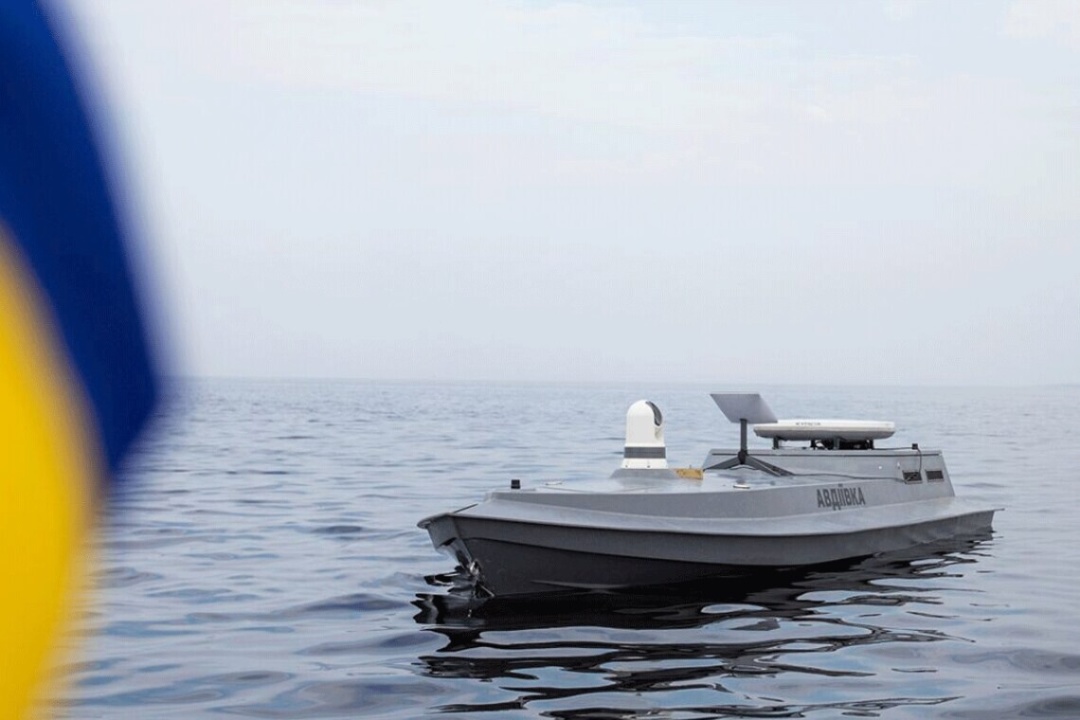
Photo Credit: SBU
The new Sea Baby 2024 uses Starlink for communication, and the satellite communication operator Kymeta provides another backup communication channel.
These naval drones have proven to be very effective. The SBU used them to strike the Crimean Bridge and targeted a total of 11 ships in the Russian Black Sea Fleet.
“We are talking about elements of artificial intelligence, about a weapons module that has long been used on land - on tanks, armored vehicles, - as well as on boats that shoot down Shahed [strike UAVs] at night. And why not use them for self-defense of uncrewed naval platforms? That’s what we used,” retired Navy captain first rank Volodymyr Zablocky told Defense Express.
4. Ukraine’s new naval attack drone can hit targets as far as 375 miles away with its lethal 150-kg payload
Ukraine’s Defense Forces now have in their arsenal a new uncrewed maritime platform equipped for strike missions. This new naval drone, named Stalker 5, was unveiled at the Black Sea Security Forum 2024 in Odesa.
Powered by a gasoline engine, the craft can develop 47 mph and cruise at 35 mph.
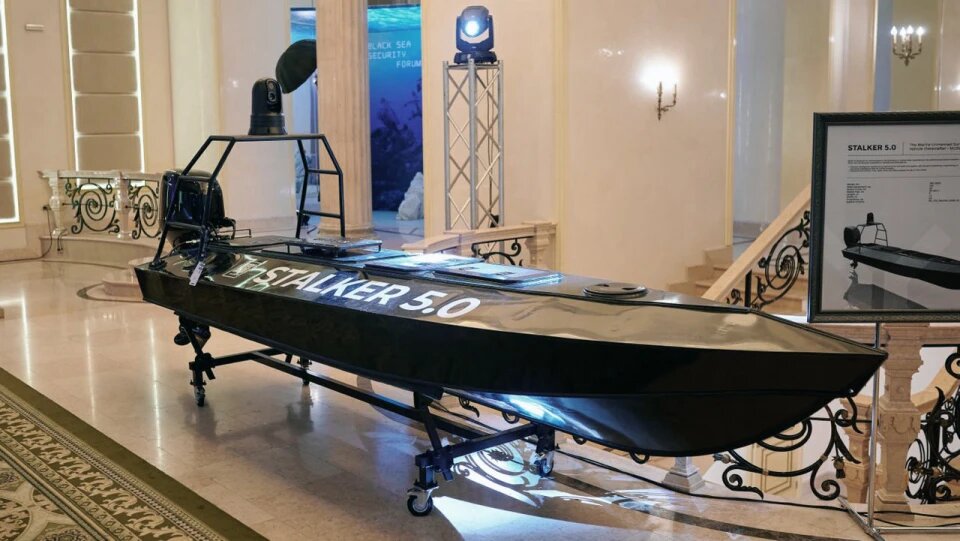
Photo courtesy of Oleksii Honcharenko/via Telegram
Being five meters long and 1.2 meters wide, it weighs 150 kg and can carry a 150-kg warhead payload.
It has a cargo compartment for weapons, ammunition, food and other supplies that can be delivered to forces deployed on islands or in coastal areas.
In addition, the Stalker can be used for reconnaissance and coastal patrol missions in sea and riverine border areas. The platform is controlled via a Starlink connection.
The new naval drone carries a price tag of EUR 60,000.
5. Droid TW 12.7 robotic combat system
The Ministry of Defense has codified and approved for operational use the Droid TW 12.7, a robotic combat system that boasts the first NATO-standardized Browning machine gun module in Ukraine.
Equipped with a 12.7 mm Browning machine gun and a 300-round magazine, the complex features advanced optical-electronic systems with thermal imaging for precise targeting. Its tracked platform ensures high maneuverability across challenging terrain, and it can be controlled remotely via tablet or gamepad.
Beyond its battlefield capabilities, the Droid TW 12.7 represents a crucial step in strengthening Ukraine’s defense industrial sector and its integration with NATO allies. By adhering to NATO standards, this technology can be shared with and utilized by other democratic nations facing security threats.

The Droid TW 12.7 boasts the features as follows: NATO-standardized Browning machine gun module;;12.7 mm caliber with 300-round magazine; Optical-electronic systems with thermal imaging; Tracked platform for high mobility and maneuverability; Remote control via tablet or gamepad; Starlink and LTE integration.
According to the Ministry, the codification of the Droid TW 12.7 represents progress in modernizing the Ukrainian Armed Forces. The system has been introduced as part of ongoing efforts to enhance warfighting capabilities through advanced technology.
6. Ground robotic system Tarhan
Ministry of Defense has greenlighted the new unmanned ground robotic system Tarhan to enter service with the Ukrainian Armed Forces.
The ground robotic system "Tarhan" boasts a compact size and light weight, making it easy to transport in a minibus or on a car trailer.
With a carrying capacity of 200 kg, the platform is well-suited for safe delivery of munitions, medicines, equipment, food and other supplies to forces on the battlefield. The robot has a silent electric motor and big rubber wheels that enable it to discreetly travel long distances over challenging terrains.
7. Ratel H ground robotic system
Ukraine has launched full-rate production of Ratel H, a new robotic evacuation and logistics platform.
The Ratel N, developed by the Brave1 defense cluster, is designed for evacuating injured casualties from the battlefield. The robot can carry over 400 kg of payload, making it capable of carrying several casualties at a time. Its design allows it to navigate difficult terrain and operate quietly, making it less noticeable to the enemy. It is also equipped with night vision cameras to perform effectively in low visibility and night time.
A versatile platform, the Ratel H can be easily reconfigured to different roles, fitted with electronic warfare (EW) systems, a mobile observation point, a combat module, or a mine-clearing installation.
Equipped with satellite communication, the operator can control the platform from a very long distance.
ARMORED COMBAT VEHICLES AND ARTILLERY
1. Bohdana self-propelled howitzer
In October, the Ministry of Defense released a video revealing a towed modification of the renowned "Bohdana" 2S22 self-propelled howitzer, mounted on the carriage of the Soviet-era 152-mm artillery system 2A36 "Giatsint-B".
This new version lacks certain features of the self-propelled baseline, such as a protective shield, but includes modifications to the artillery guidance system.
The aim behind this development is to provide a simpler, less expensive alternative to self-propelled systems. The towed Bohdana is designed to supplement Ukraine’s artillery capabilities, offering a more easily producible option amid a significant demand for artillery systems.
Ukrainian defense industries have recently ramped up the production of artillery systems in response to battlefield needs. Ukraine currently produces between 15 and 20 Bohdana self-propelled howitzers per month on various chassis. However, the demand for artillery remains high, partly due to losses and wear during the ongoing conflict. The decision to develop a towed version of the Bohdana reflects the need for simpler, more cost-effective solutions that can be produced quickly to meet Ukraine’s urgent defense requirements.
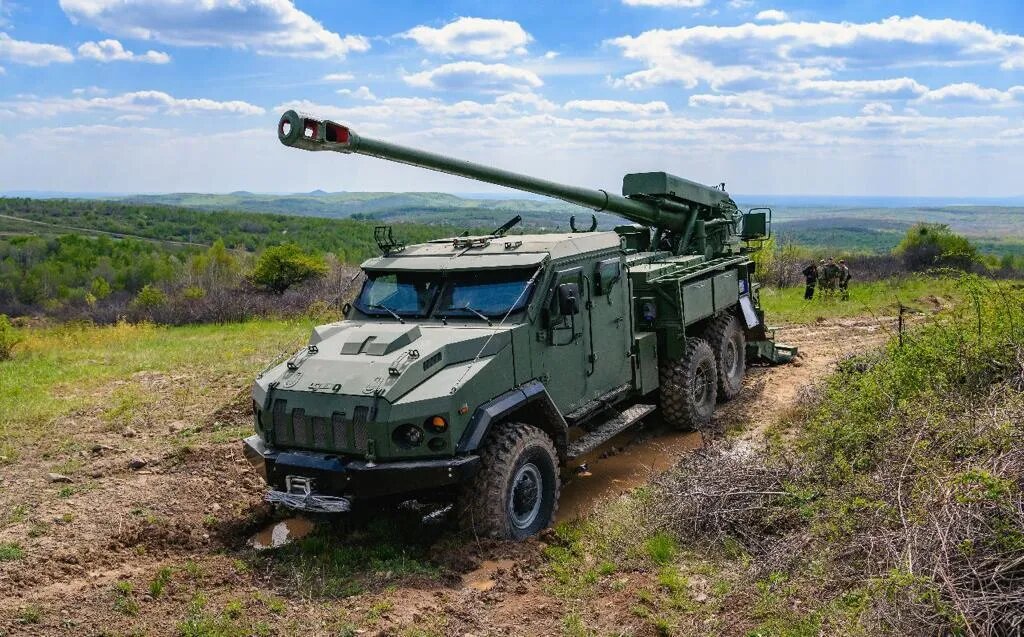
The towed version offers certain advantages, such as reduced production costs and increased reliability, despite lacking the mobility and protection of self-propelled systems. The 2A36 Giatsint-B carriage was identified as the most suitable platform for the 155mm Bohdana artillery unit due to its compatibility with the gun’s size and energy. Other Soviet-era systems, like the Msta-B and D-20, have also been considered for similar configurations, with potential for reusing old Soviet howitzer carriages to further reduce production costs.
In addition to developing towed artillery, Ukraine continues producing self-propelled Bohdana howitzers. Production has increased to 15 to 20 units per month as of 2024, compared to six units reported in December 2023. First introduced in 2018, the Bohdana self-propelled howitzer is based on a KrAZ 6×6 truck chassis and has gone through several iterations, including the Bohdana 2.0 and 4.0 versions. These later versions feature modifications such as an armored cabin and a semi-automatic loading system. The Bohdana 4.0, now mounted on a Czech Tatra 158 Phoenix 8x8 chassis, retains the 155mm NATO-caliber gun and includes survivability enhancements.
The latest variant, the Bohdana 4.0, is a 155mm howitzer with a 52-caliber barrel. It is equipped with a semi-automatic loading system and has a maximum rate of fire of 5 rounds per minute. The system has a firing range of up to 48 km with high-explosive fragmentation projectiles and up to 60 km when using rocket-assisted projectiles. It can traverse 30 degrees to the left and right, with a basic load of 20 rounds. The minimum firing range is 780 meters, and the howitzer is compatible with all NATO standard 155mm ammunition.
2. “Varta-2”: a new chassis and a higher class of crew protection
Revealed in early September, at the MSPO-2024 exhibition in Kielce, Poland, the new Varta 2 wheeled armored combat vehicle from Ukrainian Armor is a project aiming to replace the Belarusian components inside the original Varta with domestic substitutions. The development began in November 2023, and the resulting product was promoted as a versatile platform for a range of payloads.
One such is the Sich remote-controlled weapon station (RCWS), armed with a 30mm autocannon, operated from inside the armored cabin. A video clip circulating online showcases the combination of the new vehicle and this turret firing in short bursts at a proving ground. The reporters note that the vehicle is currently undergoing the codification procedure and will be available for procurement in a short while.

Photo courtesy of Ukrainian Armor
The new Varta 2 weighs 14 tons, which is 3.5 tons lighter than the base-line configuration, yet the protection, both kinetic and anti-mine, has grown one level up to STANAG 3a/3b standard. The armored carrier got a 360-hp Cummins ISB 6.7 engine and an Allison 3200SP automatic transmission. The clearance is 400 mm.
"Thanks to the independent suspension and the central tire inflation system (CTIS), the Varta 2 is able to develop a high speed [110 km/h] and overcome obstacles," the Ukrainian Armor said in a statement.
Notably, the new vehicle no longer relies on the chassis supplied from Belarus, a country that supported the Russian invasion of Ukraine by providing its territories and airfields for deployment of Russian troops and aircraft. It was the reason why the company opted to give up on their previous project, the Varta APC. The new vehicle, however, is made out of BASE 4x4 wheeled chassis, manufactured in Turkey. The interior is integrated with an air filtration system to protect the crew and passengers from chemical and biological threats.
The vehicle has shock-absorbing anti-mine seats with five-point safety belts, and a protected bottom suspended on cables, which reduces the risk of damage to the vehicle and injuries. Varta 2 has seats for ten crew members and infantry passengers.
The Varta 2 can be equipped with a set of reconnaissance drones with an autonomous range of 30 km. The drones are integrated with the ICoMWare software and hardware complex, providing enhanced situational awareness and information support to the crew commander.
The Varta-2 is powered by a 365 hp Deutz engine coupled to an Allison six-speed transmission.
"Varta 2 is a fully new design, developed while taking into account the company's ten-year experience, the needs of the military personnel, and modern war conditions," says Vladyslav Belbas, CEO of Ukrainian Armor LLC.
3. Inguar-3
In March, the Ukrainian company Inguar unveiled its Inguar-3 multirole armored vehicle. Its basic feature is that it was created as a specialized combat platform of a modular architecture — unlike other similar armored vehicles of the same class, created on the basis of civilian platforms.
Inguar-3 is an MRAP-class armored vehicle equipped with a Deutz 1500 Nm, 356 hp power plant coupled to Allison automatic transmission.
The ground clearance is 450 millimeters, which, combined with the central automatic tire inflation system, provides excellent cross-country ability, the company notes. The wheels are equipped with RunFlat inserts, allowing the vehicle to keep driving in the event of a puncture.
The armor of the monocoque capsule hull is combined, aluminum elements reduce the overall weight of the armored vehicle while maintaining the level of protection: Stanag 4569 standard Level 3 against kinetic energy threats (machine guns and sniper rifles) and Level 3a against landmines.
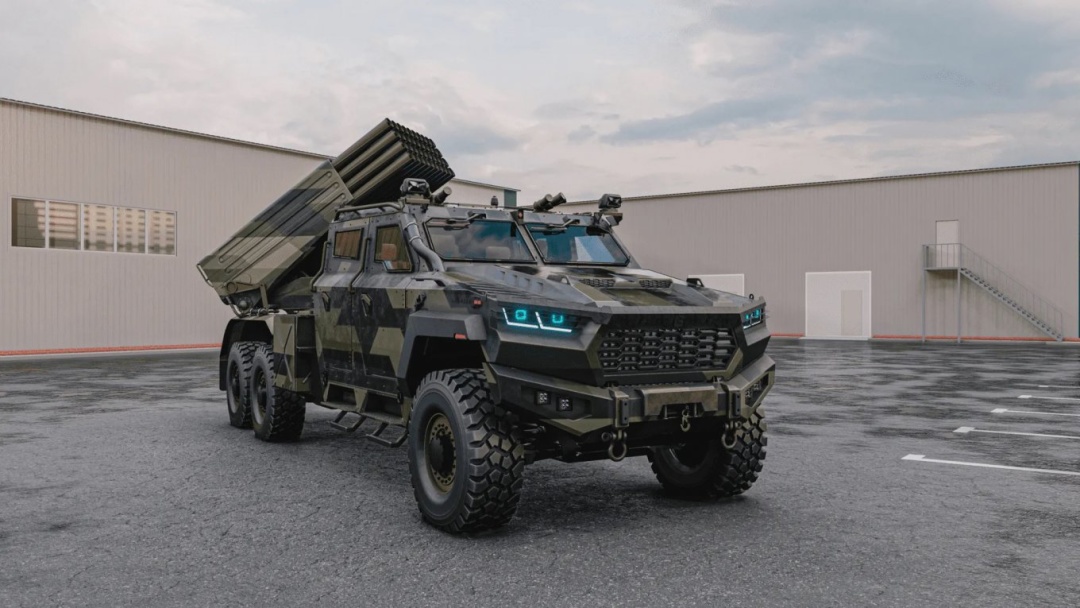
Photo courtesy of Defense Express
Other utilities are present as well: each variant is equipped with an electronic warfare module, an automatic fire extinguishing system with optical sensors, an air filtration system neutralizing chemical contamination, an autonomous cabin heater, an air conditioning system and a winch with a traction force of 12 tons.
"This vehicle represents a new generation of modular tactical armored vehicles with separate front and rear armor pods that can be adapted to any task," Inguar says. "This allows the vehicle to be quickly reconfigured for specific needs, whether it is a 4x4 or 6x6 platform, installing air defense systems, anti-tank systems, EW systems, optical reconnaissance equipment, for command and control or medical evacuation roles."
The list of tasks it can be suited to is wide, ranging from personnel or cargo carrier to a mobile Brimstone launcher or chassis for cannon artillery. There is also a sketch presenting a potential integration of demining plows and UAV catapults in the future.
Like the "Varta-2", the "Inguar-3" provides STANAG 4569 3a/3b Level protection for the crew and passengers.
The driver’s station is equipped with front, rear and side view cameras replacing mirrors for enhanced situational awareness, this augmented with a night vision camera.
It is also reported that the Inguar-3 received a frame structure and independent suspension with planetary gearboxes. Thanks to the center axle lock, differential lock of the front and rear gearbox, as well as a high ground clearance of 450 millimeters, the vehicle is capable of traversing highly challenging terrains.
Last week, the Cabinet of Ministers endorsed a resolution by the Ministry for Strategic Industries titled “Weapons of Victory”. This contains a listing of indigenous types of weapons, military and specialized equipment systems, missiles and ammunition, unmanned systems, electronic warfare equipment, as well as ground robotic platforms to be given priority in compiling Government defense procurement and acquisition plans projected for three, five and ten years.
The weapons we mentioned will definitely be included in the Weapons of Victory listing, which will hopefully be expanded significantly in 2025.
Vladyslav Obukh, Kyiv





